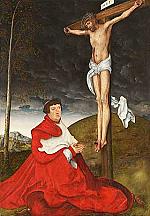Christian History Timeline: The World of 1732
ON OCTOBER 8, 1732 a Dutch sailing vessel slipped out of the Copenhagen harbor. Its destination—the Danish West Indies. On board were the first two Moravian missionaries. It was the beginning of an era.
In that year George Washington was born and 36-year-old James Oglethorpe succeeded in receiving a grant to establish the colony of Georgia—named for another George. In Philadelphia, the State House —later to be called Independence Hall—was rising in red-brick dignity. And Benjamin Franklin was wondering how people would like his first edition of Poor Richard’s Almanack.
Across the ocean, the future home of Great Britain’s prime ministers, No. 10 Downing Street, was under construction, London’s Covent Garden Opera House was opened and patrons founded the Acadamie of Ancient Music. Giving promise of the wonderful music in store for Europe—and the world—of the 18th Century, Franz Joseph Haydn was born in a village near Vienna. Bach and Handel’s music was attracting the attention of those affluent enough or high-born enough to attend the concerts.
Across Europe, the people and their rulers were breathing a sigh of relief after the bloody 17th Century. A general peace prevailed and not one of the “enlightened despots”—not Emperor Charles VI or Louis XV or Prussia’s Frederick William I—held anything like universal sway. The hierarchical feudal society descended from the Middle Ages was now in its “final phase.” Nobles, like the clergy, remained the two privileged classes, but a rising middle class often held the decisive purse strings. Nations and states were developing interests in the New World and tending to their domestic problems.
As the Columbia History of the World notes, “No monarch tried seriously to impose religious unity in Europe.” There were at least three reasons for this. In part, it was a tribute to the stature the Protestant churches had gained since the Reformation; Lutheran, Reformed and Anglican churches held favored positions and the smaller dissenting groups often found protection beneath their wings. It was due also to the anemic Catholic leadership—what H. G. Wells characterized as “weak popes, declining monasteries and lazy bishops.” But perhaps the chief reason lay in the dawning of “The Age of Reason.” The writings of Newton and a hundred other scientists and philosophers were raising serious questions which put religious dogma in jeopardy.
This leaning toward rationalism was having a predictably deadening effect upon the churches, Catholic and Protestant alike. In Germany, where Luther’s “revolt” had been successfully tamed by well meaning territorial rulers and theologians, “ emphasis was upon pure doctrine and the Sacraments as the constituent elements of the Christian life,” writes John Weinlick. “The layman’s role was the entirely passive one of accepting the dogmas which he heard expounded from the pulpit, of partaking faithfully of the sacraments, of sharing in the ordinances of the church. That kind of religion could not satisfy a crushed and poverty-stricken people.”
Thus the way was opened for Pietism, a return to the enthusiasm for Christ, this “heart religion,” flamed brightly in the late 17th and early 18th centuries, undoubtedly contributing to the Great Awakening. In Saxony, a Protestant state in what is now The German Democratic Republic, Pietism’s stronghold was Halle, from where numerous members of the nobility went into the service of the state. Among them was Count Nicolaus Ludwig von Zinzendorf (1700–1760) who in 1722 established a religious community known as Herrnhut which would prove to be not only a shelter for Pietists, but more significantly a haven for persecuted Bohemian and Moravian Brethren fleeing across the border and bringing with them the dreams of a revived Moravian church. Descendants of the Hussites, they were destined to become the core of the renewed Moravian Church and to take the gospel of Christ for which they had suffered so long and so intensely, to neglected peoples on five continents in the next few decades—beginning in 1732.
1700 Count Zinzendorf born in Dresden
1703 John Wesley, Jonathan Edwards both born
1710–1716 Halle, center of German pietism where Zinzendorf studies as a youth
1716–1719 Zinzendorf continued his studies at University of Wittenberg
1722 Moravians begin migration to Herrnhut in Saxony
1727 ‘Birthday’ of Renewed Moravian Church Spiritual awakening at Herrnhut
1732 First two Moravian Missionaries go out to preach Christ at St. Thomas and West Indies Saving Influence on John & Charles Wesley
1748 In 1748 mission outreach to the Jews in Amsterdam was begun. First church to give serious priority to Jews.
1753 “The First Missionary Impulse” In August 1753 Count Zinzendorf told a congregation of English Moravians at Fetter Lane in London how the first seed of missionary zeal was “planted in him,” says Lewis.
I know the day, the hour, the spot in Hennersdorf ... it was in the Great Room; the year was 1708 or 1709; I heard items read out of the paper about the East Indies, before regular reports were issued; and there and then the first missionary impulse arose in my soul.
1760 Zinzendorf died. At the close of the year 1760 (after only twenty-eight years of work) the Moravian Church had sent out no fewer than 226 missionaries. 3000 converts had been baptized.
1793 The Baptists were greatly encouraged to begin mission work in 1793. “Look what those Moravians had done” they said.
1795 From Zinzendorf’s inspiration the annual Herrnhut Ministers conference let to formation of the London Missionary Society, 1795 and the British & Foreign Bible Society, 1804
1818 Moravians pioneered mission work among lepers, Cape Colony, South Africa 1832 There were 42 Moravian Mission stations around the world
1900 Moravians planted churches in Greenland—turned them over to Lutheran Church in 1900
By the editors
[Christian History originally published this article in Christian History Issue #1 in 1982]
Next articles
The Moravian Mission Influence Spreads Throughout the World and to Other Denominations
Today membership in the Moravian mission Churches outnumber those at home 4 to 1!
the editorsFrom the Archives: The Schleitheim Confession
Brotherly union of a number of children of God concerning seven articles
John Howard Yoder, translatorCatholic Reformation, Did you know
We have the sixteenth century to thank for Starbucks, some famous music, and your busy calendar
the editors




